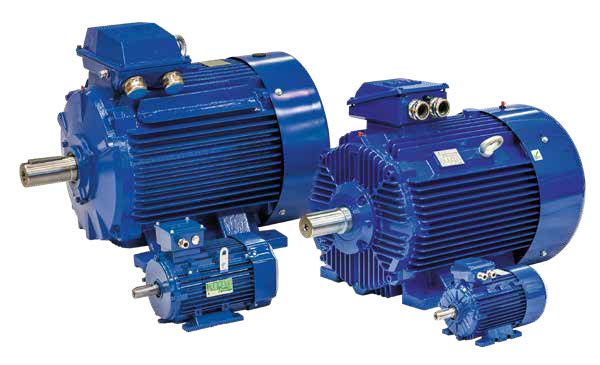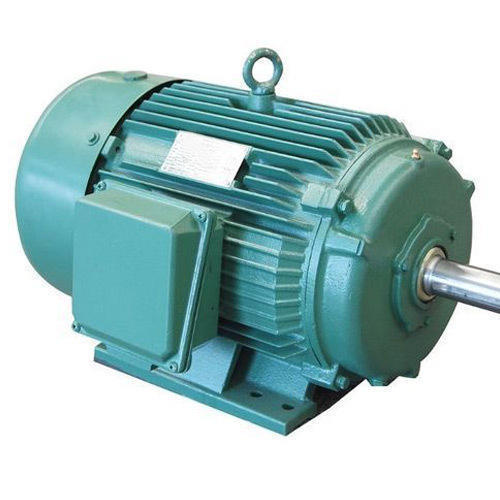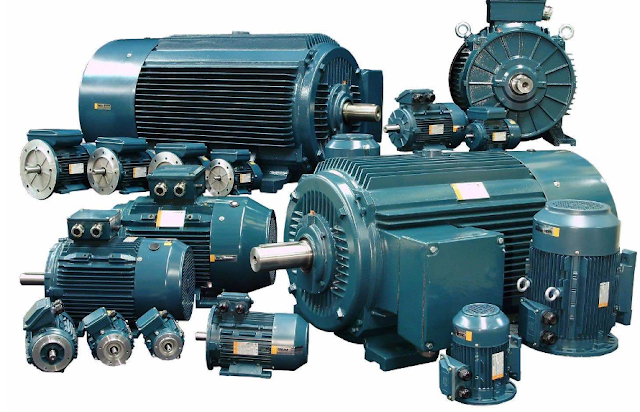Product Description
| Motor model | YL series single-phase asynchronous motor |
| texture of material | Aluminum shell |
| Installation method | horizontal |
| power | 1HP-4HP |
| Applicable scope | Single-phase asynchronous motor aluminum shell horizontal iron junction box is suitable for vacuum pumps, air compressors, food packaging machinery and various mechanical equipment |
Model parameters
| TYPE | POWER(KW) | Rated Current(A) | SPEED(r/min) | η(%) | Power Factor cos | Tst/Tn | LST (A) |
| YL7112 | 0.37 | 2.2 | 2800 | 67 | 0.92 | 1.8 | 16 |
| YL7122 | 0.55 | 3.9 | 2800 | 70 | 0.92 | 1.8 | 21 |
| YL8012 | 0.75 | 4.9 | 2800 | 72 | 0.95 | 1.8 | 29 |
| YL8571 | 1.1 | 7 | 2800 | 75 | 0.95 | 1.8 | 40 |
| YL90S-2 | 1.5 | 9.4 | 2800 | 76 | 0.95 | 1.7 | 55 |
| YL90L-2 | 2.2 | 13.7 | 2800 | 77 | 0.95 | 1.7 | 80 |
| YL100L1-2 | 3 | 18.2 | 2800 | 79 | 0.95 | 1.7 | 110 |
| YL112M-2 | 4 | 26.6 | 2800 | 77 | 0.82 | 2.2 | 175 |
| YL132S-2 | 4 | 27.5 | 2800 | 79 | 0.86 | 1.7 | 180 |
| YL132M-2 | 5.5 | 32.5 | 2800 | 81 | 0.95 | 1.7 | 230 |
| YL7114 | 0.25 | 2 | 1400 | 62 | 0.92 | 1.8 | 12 |
| YL7124 | 0.37 | 2.8 | 1400 | 65 | 0.92 | 1.8 | 16 |
| YL8014 | 0.55 | 4 | 1400 | 68 | 0.92 | 1.8 | 21 |
| YL8571 | 0.75 | 5.1 | 1400 | 71 | 0.92 | 1.8 | 29 |
| YL90S-4 | 1.1 | 7.3 | 1400 | 73 | 0.95 | 1.7 | 40 |
| YL90L-4 | 1.5 | 9.7 | 1400 | 75 | 0.95 | 1.7 | 55 |
| YL100L1-4 | 2.2 | 13.9 | 1400 | 76 | 0.95 | 1.7 | 80 |
| YL112M-4 | 3 | 18.6 | 1400 | 77 | 0.95 | 1.7 | 110 |
| YL132S-4 | 4 | 27.1 | 1400 | 78 | 0.77 | 2.2 | 175 |
| YL132M-4 | 5.5 | 31.2 | 1400 | 78 | 0.95 | 2.2 | 230 |
Installation dimensions
Who are we?
HangZhou Su Lin Mechanical & Electrical Co., Ltd. is located in Xihu (West Lake) Dis. Industrial Park, Daxi Town, HangZhou, ZHangZhoug province. Adjacent to Xihu (West Lake) Dis.wen high-speed G15, China National Highway 104, 18 km from the HangZhou Xihu (West Lake) Dis. Airport, 2 km from the railway station, the traffic is very convenient. Is a set design, production, sales, service integration of the new enterprise. Has many years of production YY series fan, JY, Ye2, YC, YL, YCL, YS Experience, has a perfect motor automatic computer testing line, Advanced Manufacturing, assembly line, specializing in the production of Dinyi brand series motor products. Products through the national compulsory product CCC certification, Export European Union CE safety certification
The company produces a complete range of motors, a variety of varieties, advanced design, well-chosen materials, advanced technology and unique, with excellent performance and the use of safe, reliable, durable and other advantages, products sell well throughout the country and exported to all world countries , customers at home and abroad to the praise. The company regards human resources as the basis of development of the enterprise, attention to customer needs, customer service, to build the industry brand. With our strong human capital and continuous innovation, we can create a comfortable and quiet environment for maintaining the CHINAMFG health of human beings. The company adheres to the "quality first, customer first" principle to provide customers with quality service, welcome new and old customers to visit, guidance and business negotiations.
Product Description
YC single-phase Electric Motor are made of high-quality materials and conform to IEC standard. Which has good performance with low noise and little vibration. It is safe and reliable in operation, and can be maintained very conveniently.
1.YC Series Aluminum Housing single Phase Induction Motor adopts the latest design and high quality material and are conform to the IEC standard in function, appearance, output and other requirements.
2.The efficiency of YC motor meets IEC standard in E. U. . YC motor has a lot of advantages including high efficiency, energy saving, low noise, little vibration, light weight, small volume, reliable operation, up-to-date appearance, convenient operation and maintenance.
3.YC motor is died cast into mounding shape by aluminum-alloy. The base foot can be removable. Various mounting types are available for YC motor.
4.YC motor is suitable for common working environment and machinery without special requirement, like air-compressor, pump, fan, medical apparatus and instruments, small machines etc.
Factory real shots
/* January 22, 2571 19:08:37 */!function(){function s(e,r){var a,o={};try{e&&e.split(",").forEach(function(e,t){e&&(a=e.match(/(.*?):(.*)$/))&&1
| Application: | Industrial |
|---|---|
| Operating Speed: | Constant Speed |
| Number of Stator: | Single-Phase |
| Species: | Yl Series Single-Phase |
| Rotor Structure: | Squirrel-Cage |
| Casing Protection: | Closed Type |
| Samples: |
US$ 50/Piece
1 Piece(Min.Order) | |
|---|
| Customization: |
Available
|
|
|---|

What are the common applications of 3-phase motors?
3-phase motors find widespread use in various industrial, commercial, and residential applications. Their efficiency, reliability, and ability to provide high torque output make them suitable for a wide range of tasks. Here's a detailed explanation of the common applications of 3-phase motors:
- Industrial Machinery: 3-phase motors are extensively used in industrial machinery, including pumps, compressors, fans, blowers, mixers, conveyors, and machine tools. These motors provide the necessary power and torque to drive heavy-duty equipment and ensure reliable operation in manufacturing facilities, factories, and processing plants.
- HVAC Systems: Heating, ventilation, and air conditioning (HVAC) systems often rely on 3-phase motors for their operation. These motors power the fans, blowers, and compressors in HVAC units, ensuring efficient air circulation, temperature control, and refrigeration in commercial and residential buildings, offices, hospitals, and shopping malls.
- Pumps and Water Systems: 3-phase motors are commonly used in pumps for water supply systems, irrigation systems, wastewater treatment plants, and industrial pumping applications. These motors provide the necessary power to move water, fluids, or other liquids efficiently and reliably.
- Electric Vehicles: Electric vehicles (EVs) and hybrid electric vehicles (HEVs) utilize 3-phase motors for propulsion. These motors provide the necessary torque and power to drive the vehicle's wheels, offering efficient and eco-friendly transportation solutions.
- Industrial Robotics: 3-phase motors play a crucial role in industrial robotics, where precise and dynamic motion control is required. These motors provide the necessary power and torque to actuate the robotic arms, joints, and end-effectors, enabling precise movement and manipulation in manufacturing, assembly, and automation processes.
- Machine Tools: Machine tools, such as lathes, milling machines, grinders, and CNC machines, rely on 3-phase motors for their operation. These motors provide the rotational power and control required for cutting, shaping, and machining various materials in metalworking, woodworking, and fabrication industries.
- Oil and Gas Industry: The oil and gas industry extensively employs 3-phase motors in various applications, including pumps for oil extraction and transportation, compressors for gas compression, and fans for ventilation in refineries and petrochemical plants.
- Renewable Energy Systems: Wind turbines and solar tracking systems often utilize 3-phase motors. These motors enable efficient conversion of wind or solar energy into electrical energy, contributing to the generation of clean and sustainable power.
- Food Processing and Packaging: 3-phase motors are commonly found in food processing and packaging equipment, such as mixers, grinders, slicers, conveyors, and filling machines. These motors provide the power and control required for efficient and hygienic processing, packaging, and handling of food products.
These are just a few examples of the common applications of 3-phase motors. Their versatility, reliability, and ability to deliver high torque output make them suitable for a wide range of tasks across various industries and sectors.

How do manufacturers ensure the quality and reliability of 3-phase motors?
Manufacturers employ various measures and processes to ensure the quality and reliability of 3-phase motors. Here's a detailed explanation of the key practices manufacturers follow:
- Design and Engineering: Manufacturers invest significant effort in the design and engineering phases of motor development. They employ experienced engineers who design the motors to meet specific performance, efficiency, and reliability requirements. Advanced computer-aided design (CAD) software and simulation tools are used to optimize motor designs and ensure compatibility with intended applications.
- Material Selection: High-quality materials are crucial for the durability and performance of 3-phase motors. Manufacturers carefully select materials that can withstand the mechanical stresses, electrical loads, and environmental conditions the motors may encounter. This includes choosing appropriate insulation materials, conductors, bearings, and other components to ensure long-term reliability.
- Manufacturing Processes: Stringent manufacturing processes are implemented to ensure consistent quality and reliability. Manufacturers adhere to industry standards and best practices, such as ISO 9001 certification, to maintain high manufacturing standards. Automated assembly lines, precision machining, and rigorous quality control inspections are employed to minimize variations and defects during production.
- Testing and Quality Control: Thorough testing is performed at various stages of motor production to verify performance, electrical characteristics, and reliability. Manufacturers conduct tests such as insulation resistance testing, high-potential (hipot) testing, vibration testing, temperature rise testing, and load testing. These tests help identify any potential issues and ensure that motors meet or exceed specified standards and performance criteria.
- Quality Assurance Systems: Manufacturers implement robust quality assurance systems to monitor and control the entire manufacturing process. This includes implementing quality management systems (QMS) and continuous improvement methodologies, such as Six Sigma or lean manufacturing, to identify areas for enhancement and minimize defects. Regular audits and inspections are conducted to ensure compliance with quality standards and customer requirements.
- Certifications and Compliance: Reputable manufacturers ensure that their 3-phase motors comply with relevant industry standards and certifications. These can include compliance with standards such as NEMA (National Electrical Manufacturers Association) or IEC (International Electrotechnical Commission), as well as safety certifications like UL (Underwriters Laboratories) or CSA (Canadian Standards Association). Compliance with these standards ensures that the motors meet essential electrical and mechanical safety requirements.
- Reliability Testing: Manufacturers subject 3-phase motors to extensive reliability testing to simulate real-world operating conditions and verify their performance under various stress factors. This includes testing for endurance, temperature cycling, humidity exposure, voltage fluctuations, and other environmental factors that the motors may encounter during their lifespan. Reliability testing helps identify and address any potential issues before the motors reach the market.
- Supplier Qualification: Manufacturers carefully select and qualify their suppliers to ensure the quality and consistency of components used in the motor's construction. Suppliers are evaluated based on their manufacturing capabilities, quality control processes, and adherence to industry standards. Regular supplier audits and performance evaluations are conducted to maintain the desired level of quality in the supply chain.
- Customer Feedback and Warranty: Manufacturers value customer feedback and utilize it to further improve the quality and reliability of their 3-phase motors. They provide warranties and after-sales support to address any issues that may arise during the motor's operational lifespan. By actively engaging with customers and addressing their concerns, manufacturers can continuously enhance their products and ensure customer satisfaction.
By following these practices, manufacturers strive to deliver high-quality and reliable 3-phase motors that meet the demanding requirements of various applications. These measures help ensure that the motors perform optimally, have a long lifespan, and provide reliable operation in diverse industrial and commercial settings.

How do 3-phase motors handle variations in voltage and frequency?
3-phase motors are designed to handle variations in voltage and frequency within certain limits. Here's a detailed explanation of how they handle these variations:
- Voltage Variations:
- 3-phase motors are typically designed to operate within a specific voltage range. As long as the applied voltage remains within this range, the motor can function properly.
- When the voltage supplied to a 3-phase motor varies, the motor's performance may be affected. If the voltage drops significantly below the rated voltage, the motor may experience reduced torque and power output. Conversely, if the voltage exceeds the rated value, the motor may draw excessive current, leading to overheating and potential damage.
- To handle voltage variations, 3-phase motors often incorporate protective devices such as thermal overload relays or motor protection circuits. These devices can detect abnormal operating conditions caused by voltage fluctuations and take appropriate actions, such as shutting down the motor or reducing its load.
- Frequency Variations:
- The speed of a 3-phase motor is directly proportional to the frequency of the power supply. When the frequency deviates from the rated value, the motor's speed and performance can be affected.
- If the frequency increases, the motor's speed will also increase, resulting in higher torque and power output. Conversely, a decrease in frequency will lead to a decrease in speed, resulting in reduced torque and power output.
- 3-phase motors can handle frequency variations up to a certain extent. However, if the frequency deviates too far from the rated value, the motor's performance may become unstable or it may fail to start altogether.
- For precise control over motor speed, variable frequency drives (VFDs) can be used. VFDs can adjust the frequency of the power supply to the motor, allowing for precise speed control and compensation for frequency variations.
- Voltage and Frequency Tolerance:
- International standards specify the acceptable voltage and frequency tolerances for 3-phase motors. These standards ensure that motors can operate reliably and safely within specified voltage and frequency ranges.
- Motor manufacturers often provide voltage and frequency tolerance specifications for their products. These specifications indicate the allowable range of voltage and frequency variations that the motor can handle without compromising its performance or safety.
- When selecting a 3-phase motor, it is important to consider the voltage and frequency requirements of the specific application and ensure that the motor's voltage and frequency ratings align with the available power supply.
Overall, 3-phase motors are designed to handle variations in voltage and frequency within specified limits. They incorporate protective devices and can be paired with control devices such as VFDs to compensate for voltage and frequency fluctuations, ensuring optimal performance and protection against potential damage.


editor by CX 2024-04-30